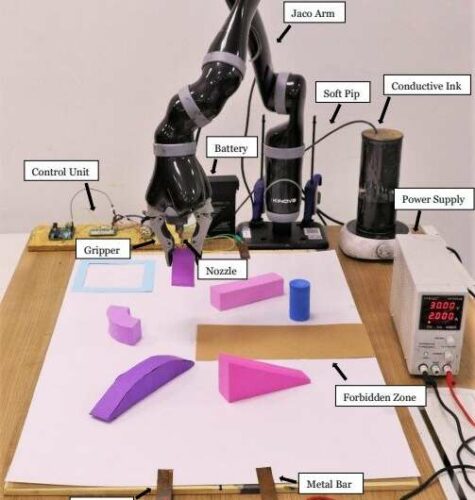Researchers introduced a novel robotic system that can power itself by painting electrical circuits using graphene-based conductive ink

“Our PLOS ONE work started as a quite philosophical thought experiment,” Andre Rosendo, the professor who carried out the study, told TechXplore. “Nietzsche claims that human’s primal instinct is power, and survival is just a condition sine qua non we couldn’t reach that final goal. Based on this idea, we started to devise experimental settings where our robot could not only act to survive but to thrive.”
In their initial stage researchers had only implemented drawing of electrical circuits for remaining functional while in the new work they included printing system with robotic gripper enabling them perform repertoire of actions to attain energy and survive even in unfavorable environment. The team performed experiments with their robot in simulations of different real-world scenarios, they also included tasks in which it had to avoid physical obstacles or regions that would discontinue its drawn circuits to make them trace different directions including straight line, their robot could efficiently learn to overcome those obstacles. They then also tested the robot in a real-world setting, to further evaluate its capabilities.
“Our robot starts each experiment with a battery, and its energy source dwindles as it moves (and we also ‘leak’ it to emulate natural energy losses due to homeostasis),” the student Xianglong Tan explained. “The robot goes through a series of virtual training episodes, with a Red terminal (VCC) that needs to be connected to another red terminal near its body, and a Black terminal (Ground) that needs to match the black one so that the current can flow towards its battery.”
This recent work aims to develop other robotic systems that can survive and thrive in complicated environments without the need for new circuits and human supervision. “We are now thinking about the next steps to build on our work and keep this experiment interesting, such as complicating the task and devising a ‘battery swap’ system to make the experiment more realistic,” Tan added.
Click for the Published Research Paper and Video






